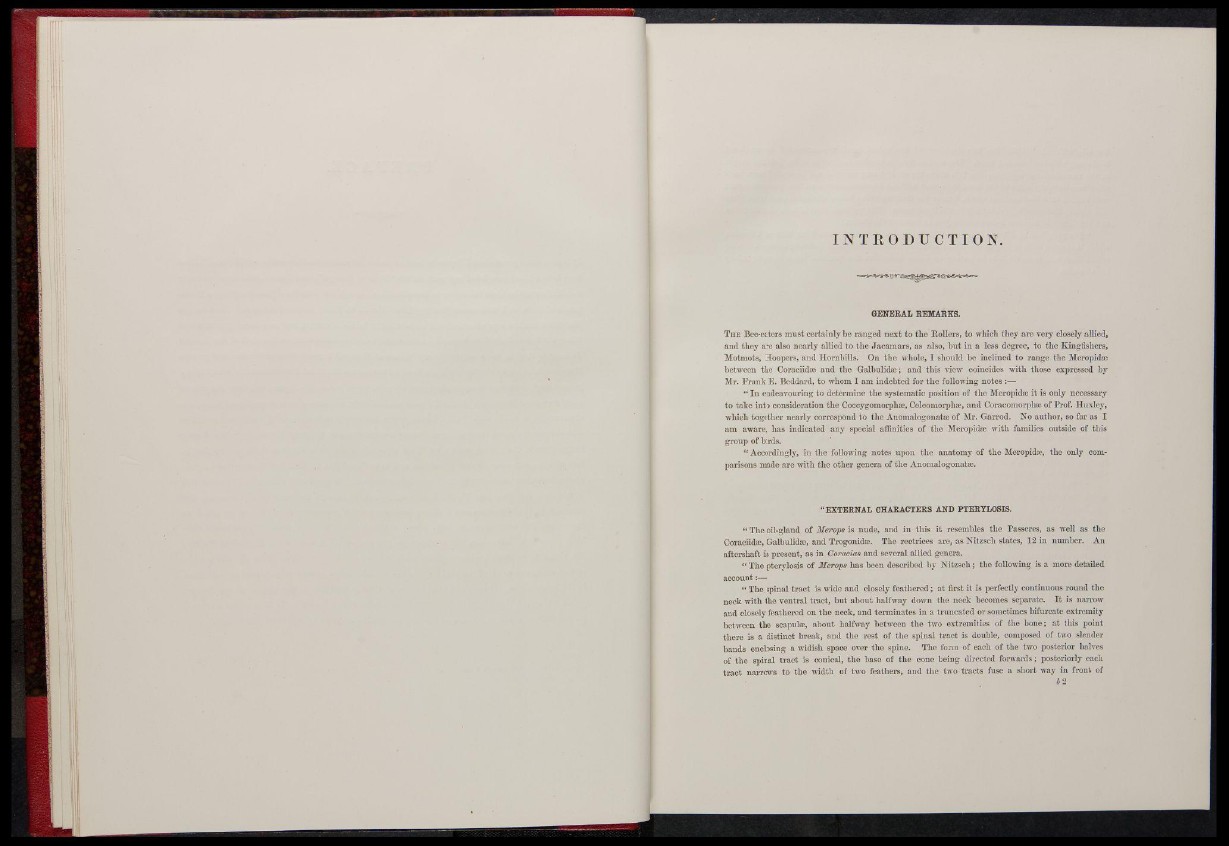
i i
I N T R O D U C T I O N .
GENERAL REMARKS.
THE Bee-eaters must certainly be ranged nest to the Rollers, to which they are very closely allied,
and they are also nearly allied to the Jaeamars, as also, but in a less degree, to the Kingfishers,
Motmots, Hoopers, and Tlornbills. On the whole, I should be inclined to range the Mcropidsc
between the Coraciidje and the Galbulichc; and this view coincides with those expressed by
Mr. Frank E. Beddard, to whom I am indebted for the following notes :—
" I n endeavouring to determine the systematic position of the Meropidie it is only necessary
to take into consideration the Coccygomorphse, CeleomorpliEe, and Coracomorphsc of Prof. Huxley,
which together nearly correspond to the Anomalogonatai of Mr. Garrod. No author, so far as I
am aware, has indicated any special affinities of the Meropidaa with families outside of this
group of birds.
" Accordingly, in the following notes upon the anatomy of the Meropida1, the only comparisons
made are with the other genera of the Anomalogonatse.
"EXTERNAL CHARACTERS AND PTERTLOSIS.
" The oil-gland of Merops is nude, and in this it resembles the Passercs, as well as the
Coraciida;, Galbulidas, and Trogonidie. The rectrices arc, as Nitzsoh states, 12 in number. An
aftershaft is present, as in Coracias and several allied genera.
" The pterylosis of Merops has been described by Nitzsch ; the following is a more detailed
account:—
" The spinal tract is wide and closely feathered; at first it is perfectly continuous round the
neck with the ventral tract, but about halfway down the neck becomes separate. It is narrow
and closely feathered on the neck, and terminates in a truncated or sometimes bifurcate extremity
between the scapulse, about halfway between the two extremities of the bone; at this point
there is a distinct break, and the rest of the spinal tract is double, composed of two slender
bauds enclosing a widish space over the spine. The form of each of the two posterior halves
of the spinal tract is conical, the base of the cone being directed forwards; posteriorly each
tract narrows to the width of two feathers, and the two tracts fuse a short way in front of
b'1